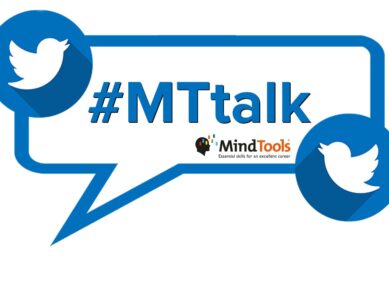“We shape our buildings. Thereafter, they shape us.” – Winston Churchill
About This Week’s Chat: Goodbye, Old Desk
I get attached to all kinds of things, but especially vintage or antique wooden furniture. It’s even worse if the item was handed down from older generations in my family – I refuse to get rid of it. And so it was with my desk…
Many years ago I was given an antique oak desk by a relative. It was a beautiful piece of furniture, but not flawless. There were marks on the surface that told a story about someone spending many hours behind the desk. Maybe the person was writing stories. Maybe he or she was an accountant, or a university professor writing important papers.
On one side it had a set of drawers that were wide and deep. They provided generous space for pens, pencils, elegant stationery, old diaries, and notebooks (many of them, because I am a zealous note-taker).
On the other side there were two shelves behind a beautifully crafted door that could lock. This is where I kept some of my most precious books, many of them signed copies.
Dreams and Reality
There was just one problem with my desk: it wasn’t made for a modern office chair. The space between the shelves on the left and the drawers on the right was only big enough for a dainty antique one.
I could picture myself sitting there in a Victorian dress, writing poems with a fountain pen. Alas, that dream never came true. Instead, the reality was me sitting bent over in an office chair that was too big to slide into the space under the desk.
My poor posture caused backache and terrible headaches, but still I held on to my beautiful desk.
Until, at the beginning of last year, the headaches became unbearable – and my husband convinced me that I needed a productive body and mind more than I needed vintage furniture!
Hello, New Desk!
Two weeks later, my old desk moved into storage and I welcomed my new glass-topped trestle desk into the special space that is my home office. I also went on a serious mission to declutter my workspace.
All of a sudden, the whole office looked different. The glass top of the new desk made it look light and modern, while the solid wood trestle legs made me feel more grounded.
And, because he knows how much I love natural products, my husband gave me a beautiful bonsai tree in a clay pot for my desk, and he found an old chunk of sleeper wood to serve as a stand for my monitor.
Most importantly, my chair fits underneath the desk, and my posture is much improved. My arms are in the right position to type comfortably, and the raised monitor makes it possible for me to look straight ahead, instead of looking down. No more headaches!
I miss my old desk, but she found a new home where she’s much loved. My office now feels light and inviting, and because I love the space so much I feel motivated and productive.
What a difference a desk makes!
Your Ideal Office Design
The physical space that you occupy all day can make a huge difference to your comfort, productivity and happiness at work.
In our poll this week, we wanted to know which element you’d most like to include if you could design your ideal office. I found it interesting that more than 50 percent of the participants said that they’d like to have more natural light! (I live in a country where the sun shines most of the time, so I forget that it’s not like that everywhere!) Click here to view all the options and the results.
During our #MTtalk Twitter chat last week, we discussed your ideal office design. Here are the questions we asked and some of the responses:
Q1. What do you like most about your current office? Why?
@KobusNeethInst Our office is a creative space where we allow people just to be.
@carriemaslen The best offices provide space to collaborate and space for privacy.
Q2. What do you like the least about your current office? Why?
@NWarind If the job is paying well and I like my work, the office doesn’t really matter for me.
@Midgie_MT I work on my own and there is no social interaction, which is something I do like to have at times.
Q3. How important is your office design to your happiness at work? Why?
@MicheleDD_MT Very. I need a place to cocoon when I am strategizing and designing – a thinking spot. If I don’t have it, I get irritable and I can’t produce my best work.
@LifeSpeak Office design is crucial to employee happiness. We spend so much time at work that it can have long-term effects on our well-being.
Q4. How does office design affect physical health?
@harrisonia Office design must incorporate good ergonomics. Chair versus desk height. Computer screen size, height and distance. Wrist rests.
@SabrinaCadini Office design has a huge impact on your physical health. It can improve your creativity and productivity. For me, facing a window when I sit at my computer is everything!
Q5. What role does color play in your ideal office design?
All of the participants agreed that color is important. It’s an element that office designers should pay close attention to.
@PG_pmp Color plays a major role: it sets the mood, brings vibrancy.
@BrainBlenderTec Color increases comfort and production as well as creativity. It’s about choosing colors that create your best possible atmosphere.
Q6. How can office space design affect productivity?
@JKatzaman Office design can perk you up or beat you down. Any of this will affect your happiness and productivity.
@Yolande_MT Too much noise and distraction would definitely also have a negative impact on my productivity. I prefer working on my own.
Q7. There is a backlash against open-plan designs in some workplaces. Why might this be, and what could be the solution?
Some people love an open-plan design, while others prefer working alone. However, there’s more to consider than just personal preferences.
@sittingpretty61 Confidentliality could be a factor, as well as the idea of forced focus, to stress discipline and the work and motivation ethic.
@harrisonia An open-plan design might save on some resources but I’d rather have my employees in a space where I know they’re comfortable and productive.
Q8. How could you improve the non-desk areas within the office or building: meeting areas, kitchens, restrooms, entry lobbies, corridors, elevators, and so on?
@MicheleDD_MT Incorporate a living wall into work spaces. Incorporate windows, skylights and light tubes to bring in natural light.
@hopegovind No separate area for executive eating – so all, irrespective of grade, can eat together. Less electrical light and more natural light. Maximum space for employees.
Q9. Office furniture and decor are influenced by fashion, just like home furnishings. What old or new approaches do you like or dislike, and why?
@sittingpretty61 I like a traditional office space, but with the focus on comfort and people’s needs for communication, casualness, and ease of being in intimate conversations. But there’s nothing worse than when I can’t get out of a chair or sofa. Embarrassing!
@Yolande_MT I dislike stark, clinical designs and spaces. It makes me feel unwelcome. I like warm, elegant designs incorporating natural materials such as stone and wood. It has to look and feel welcoming.
Q10. What are the three immediate changes that you will make (or ask to be made) to your office design?
It seems that some people work in strange conditions!
@hopegovind Remove the CCTV from the inside office area, remove the cubicle kind of structure, and keep it open. No biometrics in the office.
@JKatzaman I generally go with the office design flow, knowing nothing is set in stone or lasts long. In an Air Force cubicle office, we moved three times in four years. When I left, my desk was arm’s length from when I arrived. It’s not worth fretting over.
To read all the tweets, have a look at the Wakelet collection of this chat over here.
Coming Up
We might think that ideal working conditions produce high performers – but do they? In out next Twitter chat, we’ll be discussing the question “What Do Top Performers Do Differently?” Are their actions more intentional, or are they simply more disciplined? Click here to see all of the options and to cast your vote.
Resources
Meanwhile, here are some resources that can help you to learn more about desgining your ideal office:
How to Focus in an Open-Plan Office
Minimizing Distractions
Minimizing Workspace Stress
Creating a Healthy Workplace
Improving Physical Health and Well-Being at Work
How to Manage Hot Desking
How to Thrive in a Multi-Generational Workplace
Working From Home
How to Collaborate Successfully
Management by Wandering Around
How to Stay “in the Loop”
Members of the Mind Tools Club can also access the full versions of the following articles:
Innovations in Office Design
Creating an Energizing Work Environment
Good Manners in the Office
The 5S System
Encouraging Attention to Detail
Encouraging Team Creativity




